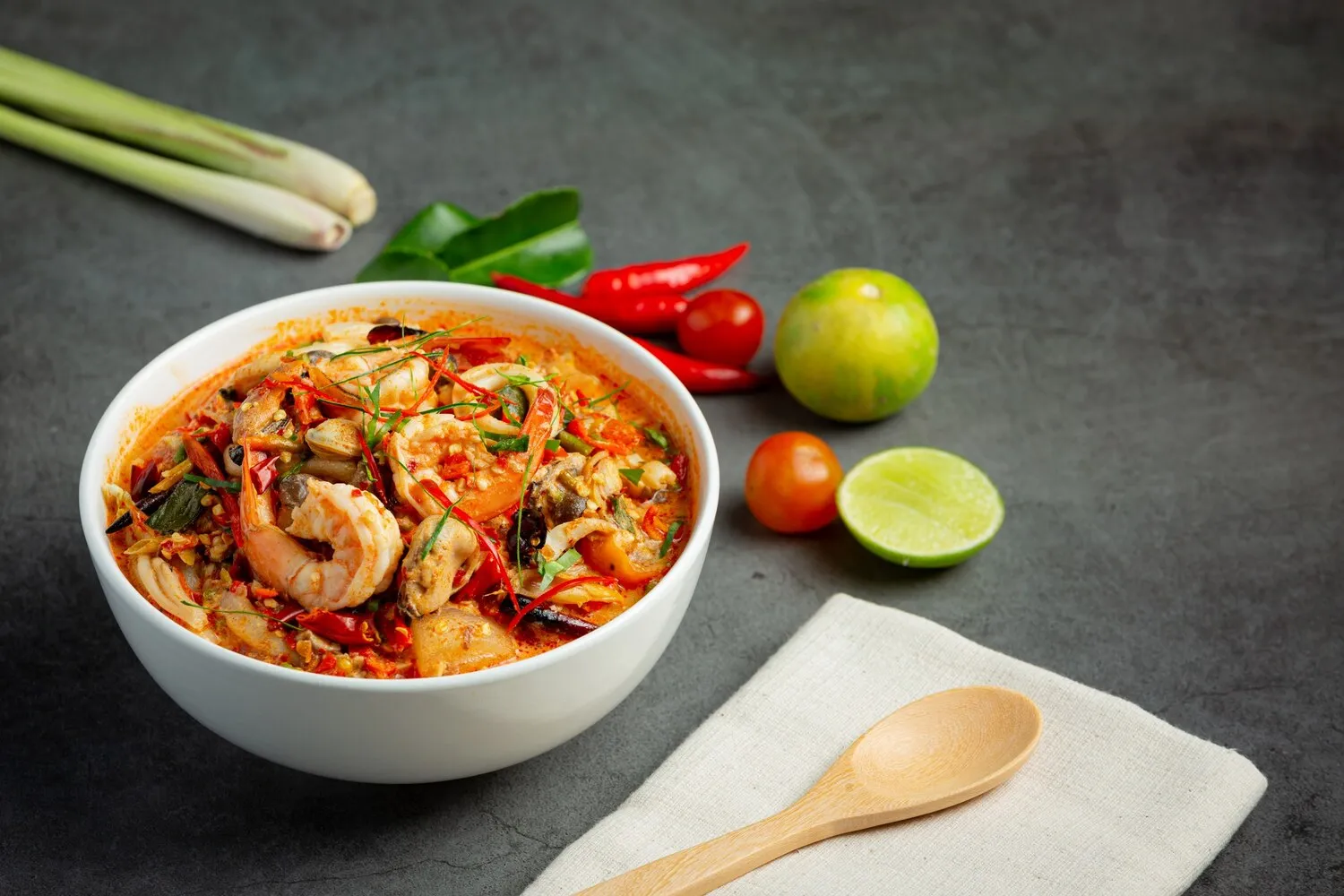
Pho (Beef Noodle Soup)
Traditional Vietnamese noodle soup with beef broth and various cuts of beef, rice noodles, and herbs. A staple of Vietnamese cuisine.
Nutrition Facts
* The % Daily Value (DV) tells you how much a nutrient in a serving of food contributes to a daily diet. 2,000 calories a day is used for general nutrition advice.
Pho's origins are debated, but it's widely believed to have emerged in the late 19th and early 20th centuries in Northern Vietnam during the French colonial period. Some theories suggest it evolved from the French dish pot-au-feu, while others emphasize indigenous Vietnamese culinary traditions, particularly the use of rice noodles and Asian spices. The dish then spread south, evolving into regional variations.
Pho is more than just a dish in Vietnam; it's a cultural icon, a symbol of Vietnamese cuisine, and a source of national pride. It represents family gatherings, street food culture, and a daily ritual for many.
Breakfast Staple
Pho is often enjoyed as a breakfast dish, with street vendors serving steaming bowls from early morning.
Family Tradition
Making Pho at home is often a family affair, with recipes passed down through generations.
Regional Variations
Northern and Southern Vietnam have distinct Pho styles, with the Southern version typically being sweeter and garnished with more herbs and sauces.
A Symbol of Vietnamese Identity
Pho has become a global ambassador for Vietnamese culture, enjoyed and appreciated worldwide.
Pho is characterized by its deeply savory, aromatic, and complex flavors, stemming from a long-simmered broth and fresh herbs.
The broth is the heart of Pho, typically made by simmering beef bones (sometimes with oxtail or knuckle bones), along with charred ginger, onions, and spices like star anise, cinnamon, cloves, coriander seeds, and fish sauce. The rice noodles (banh pho) are flat and wide. The beef component varies, often including thinly sliced rare beef (tai), well-done brisket (chin), flank (nam), fatty brisket (gau), or meatballs (bo vien). Fresh herbs like cilantro, Thai basil, mint, and bean sprouts are essential additions, providing freshness and aroma. Lime wedges, chili peppers, and hoisin sauce are often offered as condiments to customize the flavor.
Broth Quality
The broth is crucial. Look for a clear, flavorful broth that isn't overly salty or oily. A well-made broth should be rich and aromatic.
Noodle Texture
The noodles should be cooked al dente, with a slight chewiness.
Herb Usage
Don't be shy with the herbs! They add freshness and complexity to the flavor. Experiment with different combinations to find your preferred taste.
Condiment Control
Use hoisin sauce and chili sauce sparingly at first. You can always add more, but it's difficult to take away the sweetness or spiciness.
Enjoy It Hot
Pho is best enjoyed piping hot. The heat helps release the aromas and flavors of the broth and herbs.
Explore additional Soup dishes and restaurants
Explore SoupDiscover top dining spots and culinary experiences in Okotoks.
Explore OkotoksLearn more about the food culture, restaurant scene, and culinary heritage of Canada.
Explore Canada